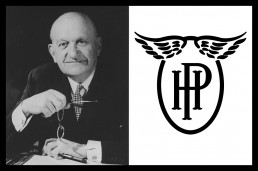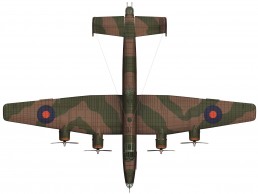Sir Frederick Handley Page CBE was an English aeronautical engineer and the father of the heavy bomber. He is renowned for designing pioneering aircraft that contributed to the efforts of both world wars and was knighted in 1942. Frederick was trained in electrical engineering at Finsbury Technical College in Clerkenwell and later educated in the subject at City, University of London.
Frederick Handley Page was born on 15th November 1885 in Cheltenham. He was the second son of Frederick Joseph Page and Ann Eliza Handley, who were members of the Plymouth Brethren, an evangelical Christian movement with origins in Dublin. In 1902, he moved to London against his parents’ wishes to study electrical engineering at the Finsbury Technical College in Clerkenwell. The college was established by the City of London’s livery companies, who also founded City and was the first technical college to open in England.
Frederick qualified from Finsbury Technical College in 1906 and a year later joined the Royal Aeronautical Society (RAeS), the oldest aeronautical society in the world and the only professional body dedicated to the aerospace community. While at the RAeS, Frederick met José Weiss, an artist and pioneer of the stable wing glider who used money acquired from painting the Sussex landscape to fund his flying experiments.

A little after his appointment, Frederick was removed from his post at RAeS due to experimental work with the company Johnson and Phillips, which was sadly misinterpreted as fraud. However, this setback did not dent Frederick’s enthusiasm for aeronautics and in 1909, he established the company bearing his name. Handley Page Ltd, or simply HP as stated in its logo, was first established in a small factory in Barking, where Frederick used Jose’s glider wing design to build his first aircraft: Bluebird.
As the company grew, it moved its premises to factories in Cricklewood where it produced some of the world’s first strategic bombers: H.P.11, H.P.12 and H.P.15, which were used in World War I. They were the first aircraft fitted with twin-engines capable of carrying 815kg of bombs, larger than anything that had been flown before. This is how Handley Page Ltd earned its reputation as the manufacturer of heavy bombers.
In Cricklewood, the company built an airfield adjacent to its factories, known as the Cricklewood Aerodrome which was later converted into Britain’s largest film studios between 1920 and 1938. Shortly after the move to Cricklewood, Frederick took up a post at the Northampton Polytechnic Institute, now City, in 1911 where he lectured in electrical engineering and built a wind tunnel. Today, City continues to house cutting-edge wind tunnels that feature in research undertaken by its Centre for Aerodynamics and Flow Control.
Following the events of World War I, Handley Page Ltd continued to develop military aircraft and built the Halifax, a heavy bomber powered by four Rolls-Royce engines. Over 6,000 Halifax aircraft were used in World War II and collectively flew 75,000 times. A year after the Halifax commenced active duty, Frederick was knighted in 1942 for his contributions to the efforts of both world wars.

From humble beginnings in Cheltenham, pioneering the heavy bombers used in World War I and World War II to being knighted by Her Majesty The Queen, Sir Frederick Handley Page enjoyed an outstanding career that spanned half a century in which City played a part.